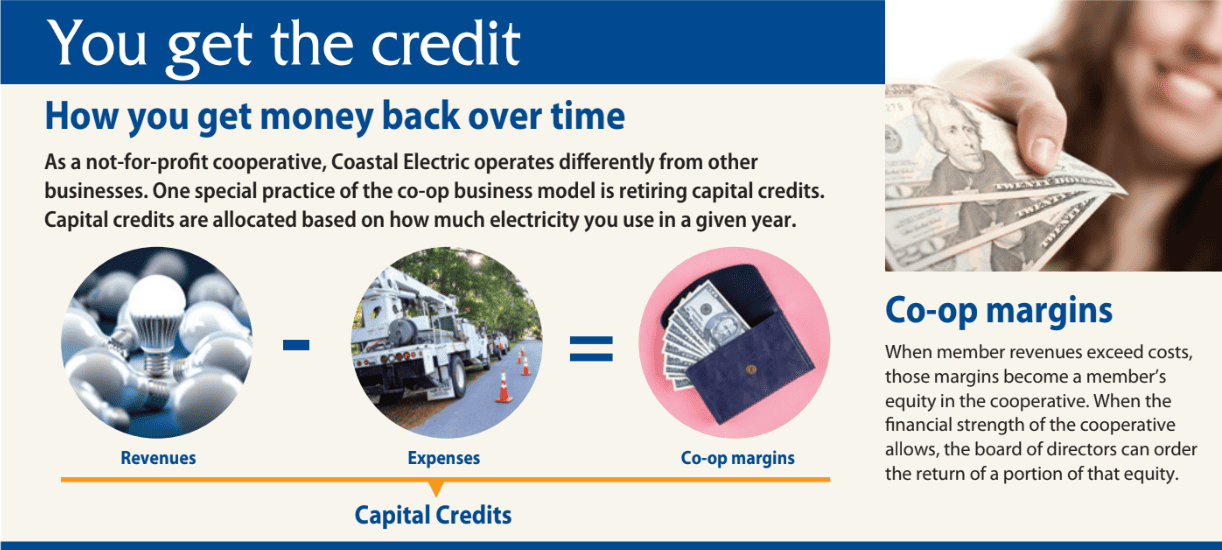If you were a Coastal Electric Cooperative member at any point from 2005 to 2007, the cooperative wants to give you money back.
In fact, Coastal Electric will retire more than $2 million in capital credits this month to members who received service in 2005, 2006 and 2007.
As a not-for-profit cooperative, Coastal Electric operates differently from other businesses. One unique practice of the co-op business model is retiring capital credits. When member revenues exceed costs, those margins become the member’s equity in the cooperative. When the financial strength of the cooperative allows, the board of directors can order the return of a portion of that equity.
Those who pay bills to Coastal Electric are more than customers— they are members. Coastal Electric has no need to generate profits, so members’ electric bills collectively cover what is needed to supply power to their homes and businesses, from generating the power at plants and buying lines and poles that deliver electricity to maintaining equipment to keep service reliable and compensating employees who make it all happen.
When the co-op’s elected board of directors determines it is financially feasible, Coastal Electric retires excess margins back to members who have paid their electric bills.
Checks will be mailed in December to everyone receiving a refund of more than $25. Amounts less than $25 will be delivered in the form of bill credits.
To date, Coastal Electric has retired more than $13 million in capital credits to members.
Inactive or former members who no longer purchase electricity from Coastal Electric (but who purchased electricity during the years being retired) receive capital credits checks, too. So if you ever move off the Coastal Electric system, be sure to keep your address up to date in the co-op’s records so you can receive capital credits when the time comes.
For more information on capital credits, visit our website.

As a not-for-profit cooperative, Coastal Electric operates differently from other businesses. One special practice of the co-op business model is retiring capital credits. Capital credits are allocated based on how much electricity you use in a given year. When member revenues exceed costs, those margins become a member’s equity in the cooperative. When the financial strength of the cooperative allows, the board of directors can order the return of a portion of that equity.
